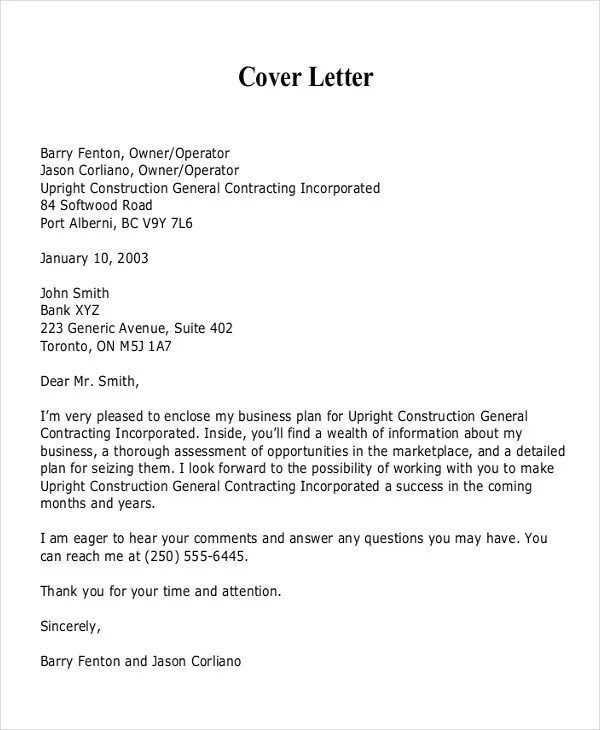Understanding the Business Proposal Cover Letter
A business proposal cover letter is more than just a formality; it is a crucial introduction to your proposal and a key element in securing new business. It’s the first impression you make, setting the tone for your entire proposal and influencing the recipient’s decision to read further. This letter encapsulates your value proposition, demonstrates your professionalism, and encourages the reader to delve into the details of your proposal. A well-crafted cover letter acts as a summary, highlighting key benefits and showing your understanding of the client’s needs. It also builds trust and credibility by showcasing your attention to detail and commitment to their success. Therefore, a cover letter can significantly impact the success of your business proposal, making it a critical component of your overall strategy. A cover letter can significantly impact the success of your business proposal, making it a critical component of your overall strategy.
Purpose of a Business Proposal Cover Letter
The primary purpose of a business proposal cover letter is to introduce your proposal and encourage the recipient to read it. It provides a brief overview, summarizing your proposal’s key benefits and value proposition. The cover letter also aims to establish a personal connection with the recipient. It showcases your understanding of their needs and how your solution aligns with their goals. Additionally, the cover letter helps build trust and credibility by highlighting your professionalism and attention to detail. This is vital in setting the stage for a positive first impression, increasing the likelihood that your proposal will be considered favorably. It is essential that you use the letter to personalize the communication to make it feel more relevant, which enhances its impact. By effectively summarizing your proposal’s purpose, highlighting key benefits, and demonstrating your understanding of the client’s needs, you can significantly increase the chances of securing the project.
Key Components of a Cover Letter
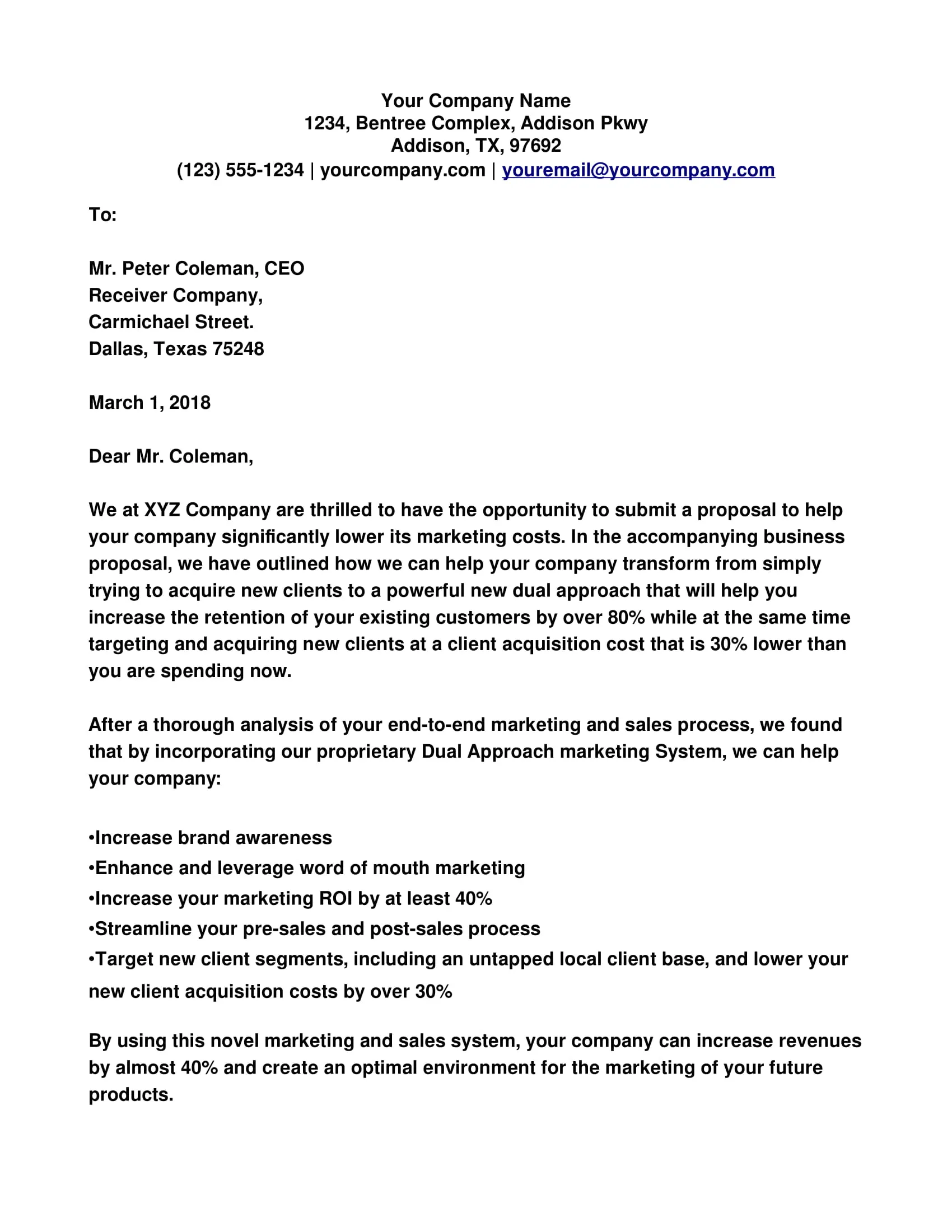
A compelling business proposal cover letter is composed of several essential elements that work together to create a professional and persuasive document. Each component plays a vital role in capturing the reader’s attention and encouraging them to review your full proposal. From basic contact information to a strong call to action, every part must be crafted with precision and clarity to deliver your message effectively. Contact details are a key factor because it gives the client the tools to connect with you and your company. The opening should be short but convey confidence and professionalism. The body of the letter provides the details needed for the client. The closing should be well-thought out to help the client choose the next step. By understanding and implementing these components, you can create a cover letter that stands out and drives the reader toward your main goal: acceptance of your business proposal.
Contact Information
Start your cover letter by providing your contact information, including your full name, title, company name, address, phone number, and professional email address. This information is essential for the recipient to quickly identify the sender and know how to reach you. Ensure that your contact details are current and accurate. This is the first piece of information, so it needs to be easy to find and read. Correct contact details are the foundation of your letter, so double-check all details. This small detail shows professionalism.
Date
Include the current date to provide context and allow for easy reference. This simple step helps in organizing your documents and shows when the proposal was created. Use the proper format to guarantee that it is easy to read. The date provides context and helps in tracking the relevance of your document. The date shows the reader when the proposal was written, which provides clarity for any follow-up. The date gives a sense of professionalism.
Recipient’s Information
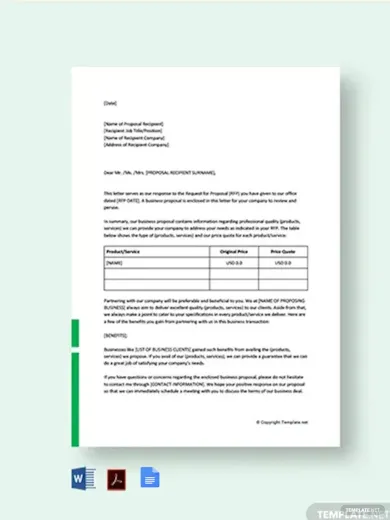
Address the letter to the correct person by using their name, title, and company. You can do this by researching the company’s website or using the title of the department. Personalizing the letter to the specific recipient demonstrates that you have done your research and that you understand the importance of the opportunity. It helps to build trust. Making it personal and showing the reader that you care about the details is important.
Salutation
Begin your letter with a professional salutation, such as “Dear Mr./Ms./Mx. [Last Name],” or a similar polite greeting. If you do not know the recipient’s name, you can use a general greeting like “Dear Hiring Manager” or “To Whom It May Concern.” This greeting sets the tone for the entire letter. It is the start of communication. The salutation should be polite and appropriate. Be sure to use a style that matches the company culture.
Crafting the Opening Paragraph
The opening paragraph is your first chance to make a strong impression. It is essential that you state the purpose of your letter, which is to submit a business proposal. Be clear and state the proposal’s topic or the service you are offering. You also must briefly mention the client’s needs you are addressing or their challenges you are solving. The tone of the opening should be confident and professional. Avoid being vague. Highlight the key benefits of your proposal to hook the reader and encourage them to keep reading. This initial summary lets the reader understand the main message of the letter.
Clearly State the Proposal’s Purpose
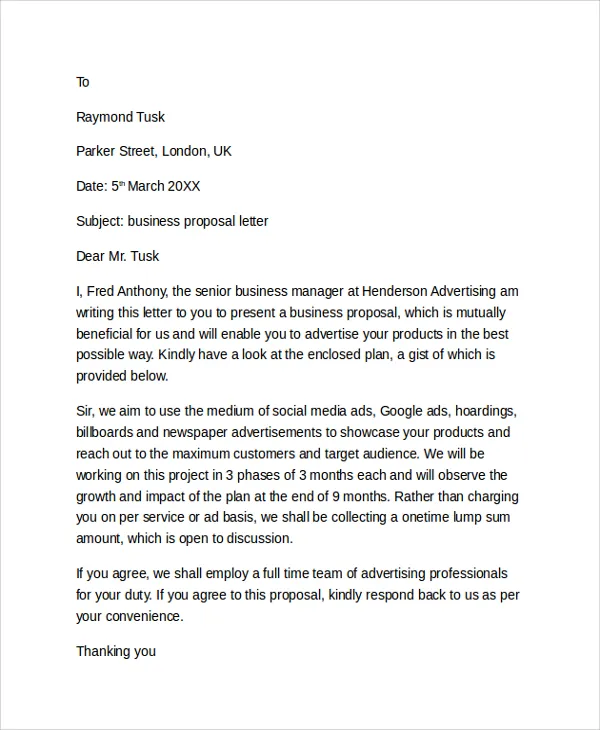
Begin by stating the reason for your communication in a clear and direct manner. The opening paragraph must state that you are submitting a business proposal. Immediately state the project, service, or product to give the reader context. Avoid being vague or overly technical, and use clear language from the start. Doing this makes the main purpose of the letter apparent, grabbing the reader’s attention. Start clearly to help with the overall comprehension of the letter. The goal is to establish the purpose as soon as possible, which saves time and provides an appropriate context.
Highlight Key Benefits
The opening paragraph must also spotlight the key benefits the client will receive. Summarize the main advantages of your offer. This early emphasis on benefits helps to showcase to the reader why they should continue reading. Briefly explain how your proposal solves problems, meets needs, or helps them achieve their goals. Focus on the benefits and the positive outcomes that will come from accepting your proposal. The goal is to make your proposal more enticing.
The Body Paragraphs - Detailing Your Value
The body paragraphs should provide more details about your value proposition. Each paragraph should address a different aspect of your proposal or a specific benefit. This will keep the reader engaged and help with comprehension. Clearly outline your plan, the solutions to the client’s challenges, and the results they can expect. Base your arguments on facts and supporting evidence to back up your claims. Avoid jargon and technical language that could confuse the recipient. Ensure that each paragraph is focused and persuasive to maintain the reader’s interest in your solution. If you provide a solid, clear description of your plan, the client is more likely to understand the value you provide.
Showcase Your Understanding of the Client’s Needs
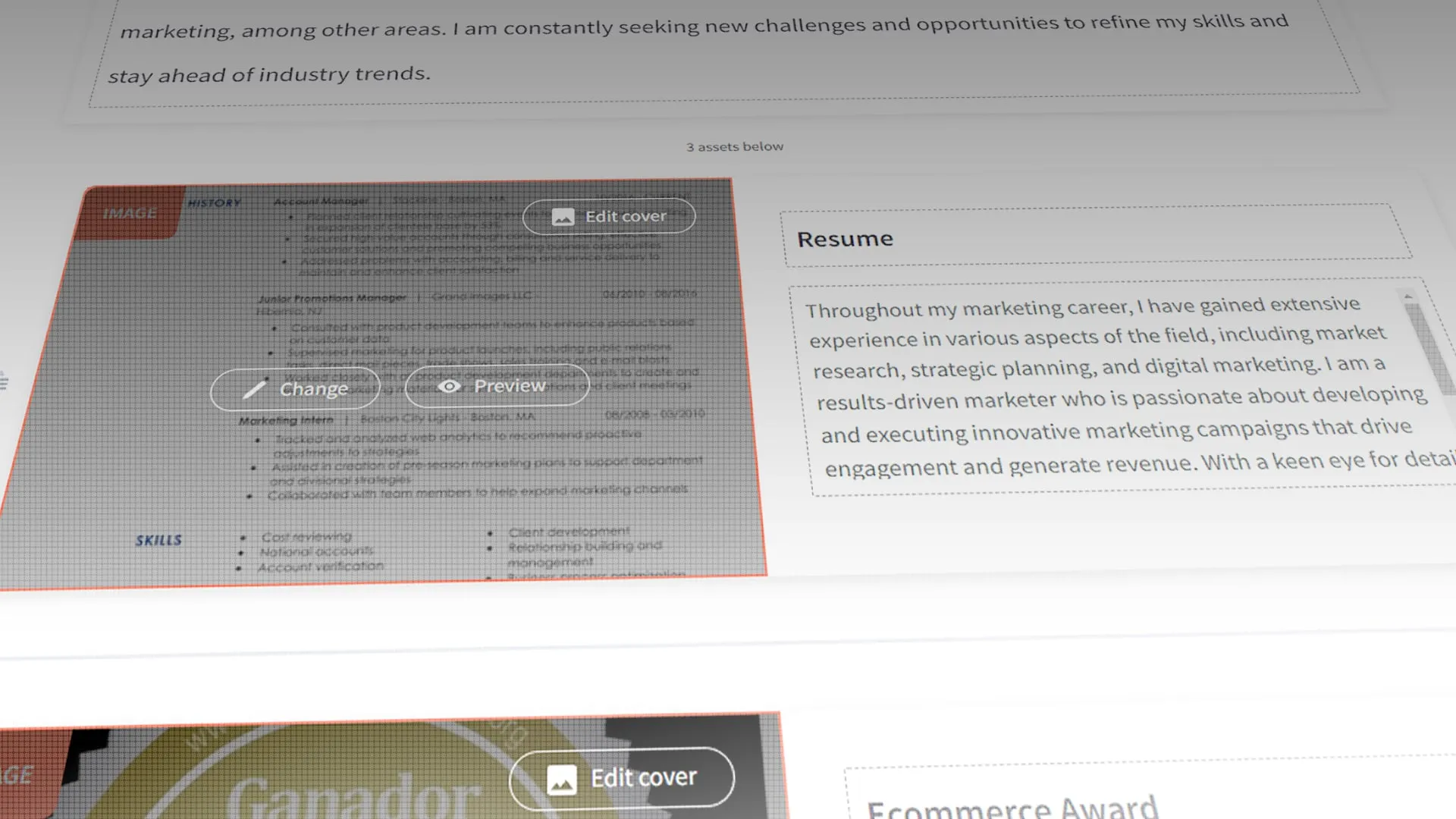
To truly resonate with the recipient, showcase your thorough understanding of their needs. Show that you have researched and understand their business, challenges, and goals. Refer to their specific issues or opportunities. Use your proposal to address these directly. This approach shows that you value their needs. Demonstrating your understanding builds trust and shows that your solution is tailored to their specific situation. This is more likely to be considered favorably. The aim is to show you understand them, not just explain them.
Outline Your Proposed Solution
Provide a concise overview of your proposed solution. Clearly explain the key features of your plan and what you are offering. Include details of your approach, and show that you have thought out your plan. Use clear, simple language. Give the reader a summary that is quick to comprehend without being too long. Doing this allows the client to understand the details and show your ability to address their issues.
Emphasize Your Unique Selling Proposition
Highlight what sets you apart from your competitors. Briefly explain your unique selling proposition (USP) in the body of your letter. This could include your special skills, distinctive approach, or any competitive advantages. Be certain to state what makes your proposal better than others. Highlighting your USP increases the value and benefits, which can give you a competitive edge. Show the reader why they should choose your services or product. When your unique advantages are apparent, it will help make your proposal stand out.
The Closing Paragraph - Call to Action
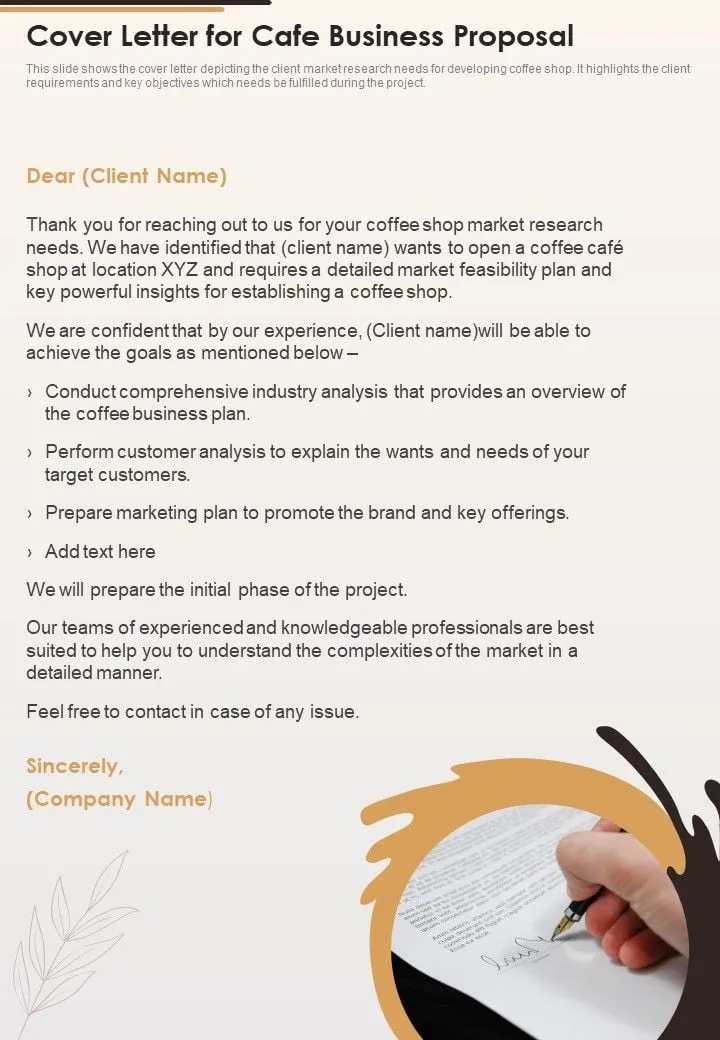
The closing paragraph is your last chance to leave a positive impression and guide the reader to make a decision. It should be brief, and clearly encourage the recipient to take a desired action. Reiterate your commitment to the project, and thank them for their time and consideration. A well-crafted closing paragraph can increase the likelihood of your proposal being accepted. Make the closing optimistic and professional. A strong call to action is important to set the stage for what comes next.
Express Gratitude
Start the closing paragraph by expressing your gratitude to the recipient. Thank them for taking the time to review your proposal. This shows respect and acknowledges their efforts. A brief thank you establishes a professional tone. Expressing gratitude shows appreciation for the opportunity to work together. Beginning with, “Thank you for your time,” is a good way to show respect.
Reiterate Your Contact Information
Reiterate your contact details one more time, including your phone number, email address, and any other pertinent details. This makes it easy for the reader to reach you if they have questions or want to move forward. Provide your details one more time to make it easy for the reader to make contact. Include your contact details again. This is a good way to make the action easy and convenient for the client. Repeating the contact information makes it easy to reach you.
Include a Strong Call to Action
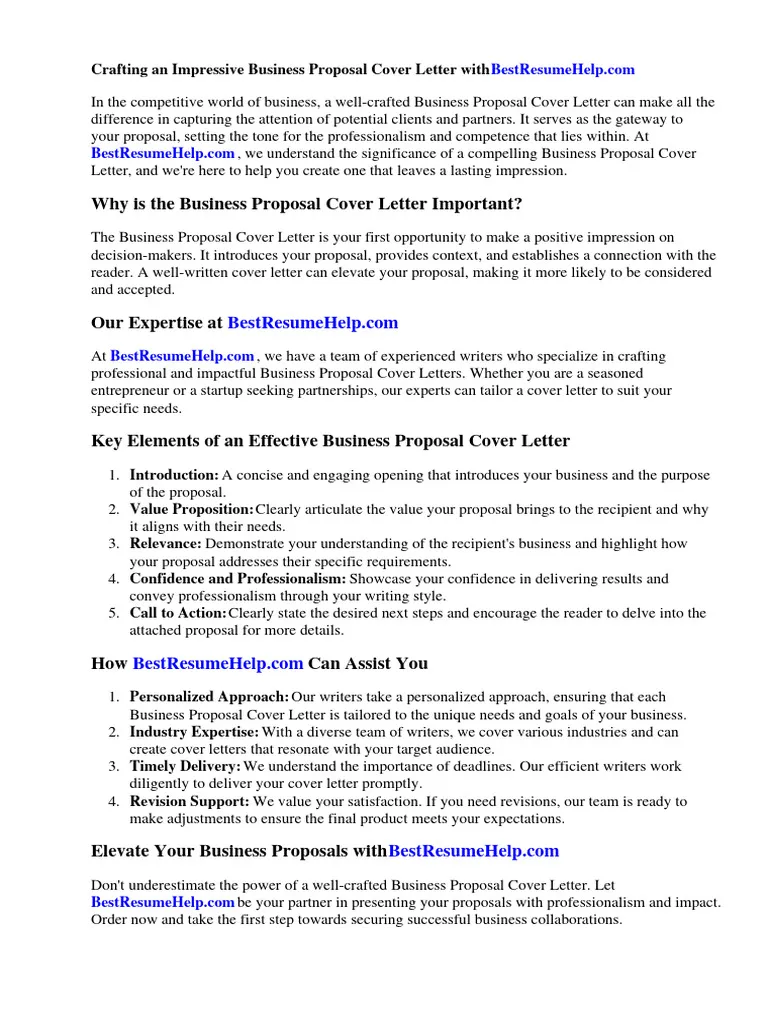
Conclude with a clear call to action (CTA), telling the recipient what you want them to do next. This may include scheduling a meeting, approving the proposal, or contacting you for more information. The CTA must be direct and actionable, so that the reader is not confused. Make sure your CTA is specific: “We encourage you to review the proposal and contact us to schedule a meeting.” By including a strong CTA, you are guiding the reader on how to proceed and increasing the chances of a positive response.
Formatting and Presentation Tips
The format and presentation of your cover letter have a significant effect on its effectiveness. A well-formatted cover letter is easy to read and projects professionalism. Make sure that it is visually appealing. This also shows attention to detail and helps the recipient give it careful consideration. Following these tips will help you in both readability and professionalism. Remember that the presentation is just as important as the content.
Choose a Professional Font
Choose a clear, professional font that is easy to read. Some common options include Times New Roman, Arial, Calibri, and Helvetica. Use a font size of between 10 and 12 points. Avoid decorative or unusual fonts, which could be distracting and unprofessional. Use bold and italics sparingly to emphasize important points, but do not overuse them. Ensuring a professional font provides an initial impression of quality. Use consistent formatting to maintain the professional appearance of the letter.
Keep It Concise and Easy to Read
Keep your cover letter short and to the point, typically no more than one page. Use concise language, and avoid lengthy sentences or paragraphs. Organize the content logically with clear headings and subheadings. Make use of bullet points to break up the text. Use short paragraphs to enhance readability. By keeping the letter simple, you increase the likelihood that the reader will engage with your message.
Proofread Meticulously
Always proofread your cover letter multiple times before sending it. Check for spelling, grammar, and punctuation errors. Make sure that your language is appropriate for your audience. A well-proofread letter reflects attention to detail and professionalism. Always double-check names, titles, and contact information. Use spell check and grammar check tools. A clean and error-free cover letter shows that you respect the reader’s time and attention.
Example Business Proposal Cover Letter
Below is a sample cover letter. Remember, this example is a template, so adapt it to fit your own needs.
Sample Cover Letter
[Your Name] [Your Title] [Your Company] [Your Address] [Your Phone Number] [Your Email]
[Date]
[Recipient’s Name] [Recipient’s Title] [Recipient’s Company] [Recipient’s Address]
Dear [Mr./Ms./Mx. Last Name],
I am writing to submit a business proposal for [Project/Service]. This proposal details [Key benefit 1] and [Key benefit 2] that will help [Client’s Name] achieve [Client’s Goal].
[Briefly explain the key aspects of your proposal]
[Highlight your understanding of the client’s needs and how your solution addresses them]
[Provide a concise overview of your proposed solution]
[Emphasize your USP]
Thank you for considering our proposal. We have included all the details of our services and pricing in the accompanying document. We are excited about the prospect of working with you. Please contact us to schedule a meeting to discuss this proposal further or answer any questions.
Sincerely, [Your Signature] [Your Typed Name]
Modifying the Example to Fit Your Needs
The provided sample is a guideline, and you should customize it to match your specific requirements. Here are some tips to ensure that your cover letter is as impactful as possible:
Be Specific: Always include details about your services and products. Do not be vague.
Make It Personal: Address each recipient by name, and change the content to meet their specific needs.
Review: Always check and edit the content. Ensure all formatting and language used is correct.
Adapt for Each Proposal: Personalize the proposal to match the specific project at hand. Review the proposal to ensure all elements match.
By modifying the sample, you show the recipient that you value their business and that your proposal is well-tailored to their requirements.
